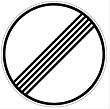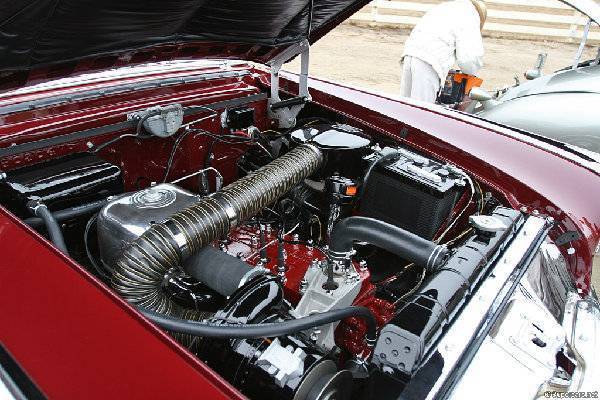|
Re: 1952 327 Connecting Rod Help/Suggestions
|
||||
|---|---|---|---|---|
|
Home away from home

|
Very, very cool project. Keep us updated. One other discussion point: If you are going to run a supercharger, you could consider running a 327 head instead of the 288 head. Your static compression would be lower with the 327 head, but the larger chamber volume helps engine breathing. Your supercharger will then bring up the dynamic compression ratio.
Posted on: 2018/12/26 2:01
|
|||
|
1953 Clipper Delux Club Sedan, 1953 Caribbean, 1969 912, 1990 Miata
|
||||
|
||||
|
Re: 1952 327 Connecting Rod Help/Suggestions
|
||||
|---|---|---|---|---|
|
Not too shy to talk

|
This is an interesting point you bring up 327 v 288 head. I was always under the impression that the 288 head mounted to the 327 block was the better performance option since the 288 offered higher compression and then all you had to do was porting/polishing of the bowls/chambers. What I state seems to be widely published on the web forums.
Are you saying that because of my election to supercharge the engine, I'd benefit from the lower compression of the 327 head? again, assuming I am able to optimize the bowls/chambers of the 288 head to be as good or better than what is in the 327. w-
Posted on: 2018/12/26 16:12
|
|||
|
-Willie Paul
52 Packard 200 Coupe "La Carrera" tribute 26 Packard 136" chassis with 29 HP Eight engine 62 Triumph TR4 roadster custom 95 Ferrari 456 GT manual 70 BMW r75/5 "scrambler" 04 Mercedes g500 |
||||
|
||||
|
Re: 1952 327 Connecting Rod Help/Suggestions
|
||||
|---|---|---|---|---|
|
Home away from home
|
Its simply an issue of preignition. Flatheads are much more prone to knocking and if you start with relatively high compression it will knock like crazy when the boost kicks in. I don't know who you can ask about a suitable compression ratio for the boost you are planning. The flathead Ford people are sure to have an opinion, or Jack Vines may have some experience.
Posted on: 2018/12/27 7:40
|
|||
|
||||
|
Re: 1952 327 Connecting Rod Help/Suggestions
|
||||
|---|---|---|---|---|
|
Home away from home

|
Usually engines with turbos or superchargers will have lower static compression ratios because it allows you to fill more combustion chamber with the air/fuel mixture that you are cramming in with your turbo or supercharger. Having the 288 head with smaller combustion chamber and the supercharger might be too much of a good thing. If, as you can see in the cross section of the engine, the yellow painted area of the head is a little bit bigger (as in the 327 head) it should allow the engine to breathe a little better.
How about using valves with a thinner valve stem?
Posted on: 2018/12/27 7:45
|
|||
|
1953 Clipper Delux Club Sedan, 1953 Caribbean, 1969 912, 1990 Miata
|
||||
|
||||
|
Re: 1952 327 Connecting Rod Help/Suggestions
|
||||
|---|---|---|---|---|
|
Not too shy to talk

|
ahhhh...thanks for setting me straight! What I was referring to earlier re: GMC truck valves earlier was that IIRC. The forum I was reading was referring to thinner valve stems while retaining the same nominal surface area of the valve itself.
re: head size, fortunately I have a VGC 327 Thunderbolt head and a 288. I may be now swayed to go with the Thunderbolt. decisions, decisions...but the time is getting near to start the engine build.
Posted on: 2018/12/27 8:56
|
|||
|
-Willie Paul
52 Packard 200 Coupe "La Carrera" tribute 26 Packard 136" chassis with 29 HP Eight engine 62 Triumph TR4 roadster custom 95 Ferrari 456 GT manual 70 BMW r75/5 "scrambler" 04 Mercedes g500 |
||||
|
||||
|
Re: 1952 327 Connecting Rod Help/Suggestions
|
||||
|---|---|---|---|---|
|
Home away from home

|
Quote:
Its simply an issue of preignition. Flatheads are much more prone to knocking and if you start with relatively high compression it will knock like crazy when the boost kicks in. I don't know who you can ask about a suitable compression ratio for the boost you are planning. The flathead Ford people are sure to have an opinion, or Jack Vines may have some experience. Key to controlling knock in flatheads is maintaining minimum squish/quench across as much of the piston surface as possible. That's why it's good science to square the block deck, measure carefully, order your forged pistons with a high ring placement and to ride at zero deck. By closing the quench area to just the thickness of the gasket, this forces the air/fuel mixture into the recess in the head. The smaller the area, the less likely it is to knock. Quote: Usually engines with turbos or superchargers will have lower static compression ratios because it allows you to fill more combustion chamber with the air/fuel mixture that you are cramming in with your turbo or supercharger. For true, usually. However, Paxtons were designed for small engines turning higher RPM; on a 327" displacement, at no more than 4,000 RPM, it's unlikely a Paxton will show more than 3-4# boost. Yes, a Paxton can be overdriven with a larger crank pulley and thus make more boost at a lower engine RPM, but the ball drive life becomes measured in hours. jack vines
Posted on: 2018/12/27 15:11
|
|||
|
||||
|
Re: 1952 327 Connecting Rod Help/Suggestions
|
||||
|---|---|---|---|---|
|
Home away from home
|
I'd be interested to see some dyno results on this set-up to verify the HP, but don't know if that's in the program?
The HP curve from that can be used to determine the gearing, but you don't mention the trans, w/ or w.o OD? It's possible to calculate the engine rpms at 80, with that gear info if you also know the tire size. I don't see much issue with rpm with that rear end ratio. The L8 327 is a stroked 288, so more rod travel, so would benefit from lighter/stronger pistons. These are fairly low (~8:1?)compression to begin with, so I wouldn't worry about the head issues. You won't see pre-ignition or detonation until much higher and partly an octane issue. Pressurizing changes the charge density affecting ignition also. So you have to check your "what to use for spark" plan too. That weak 6V probably won't cut it. Probably have to play with the timing which is dyno work. Whichever head is the stronger/best shape of the two is best. You can flow test, but not sure that's in scope either? There were some aluminum after market back in the day but scarce today. There's a few "P" L8s running around with turbos, but first I'm hearing with SC-er. The Frod flattie V8 hotrod guys are way ahead in this dept. I've always thought the inline siamese flatheads were not as good candidates for charging as the head strength/sealing comes into play which is not so much for the flat V configuration. What I remember from mechanical engineering calcs for bolting of flats. aka, why pressure vessels are not cubes. Boost also increases the heat load, so that may need attention. (you double displacement for every 15 lbs boost) Stock water pump/radiator or aftermarket? Sorry, interested, but I just don't get excited about making 250 Hp from such a heavy(800+#) 5.4l motor. An OHV straight six will do that at much less weight and many V4s. eg; 3.6 l V6 (naturally aspirated) in my new Cad is 310. The new 2.0 l V4 bi-turbo is ~240 and probably fits in your shirt pocket... So you pay a big price for the old school look. Good luck and keep us posted.
Posted on: 2019/1/14 22:52
|
|||
|
||||
|
Re: 1952 327 Connecting Rod Help/Suggestions
|
||||
|---|---|---|---|---|
|
Forum Ambassador

|
Sure looks pretty.
Posted on: 2019/1/15 8:50
|
|||
|
||||
|
Re: 1952 327 Connecting Rod Help/Suggestions
|
||||
|---|---|---|---|---|
|
Home away from home

|
C'mon, Jim. If cost equations ever entered into the discussion, none of us would bother with old cars and certainly not Packards.
It's just an interesting technical exercise to discover what makes an old straight eight go a bit faster. I do agree with most of your summation, but strongly disagree with: Quote: These are fairly low (~8:1?)compression to begin with, so I wouldn't worry about the head issues. You won't see pre-ignition or detonation until much higher and partly an octane issue. Flatheads absolutely begin to have pinging/pre-ignition/detonation problems when compression ratios go above 8:1. Just ask anyone who has extensive experience with the '54 359" with 8.7 compression. The large surface area has too many corners and dead spots. That's also the reason flatheads can't tolerate much ignition advance. jack vines
Posted on: 2019/1/16 11:21
|
|||
|
||||

 (155.40 KB)
(155.40 KB)






